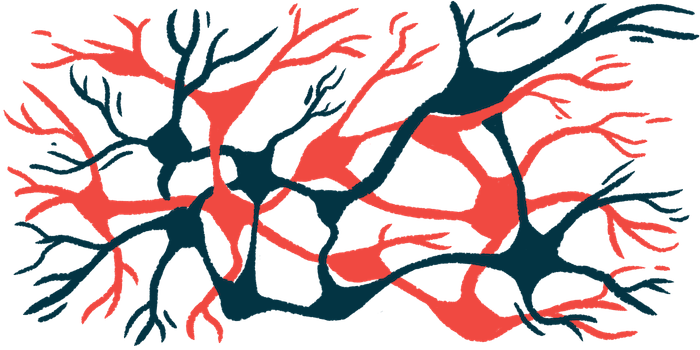Changes to Corneal Nerves Found in Adults With Sjögren’s in Imaging Study
Earlier diagnosis possible with use of non-invasive IVCM technique

A non-invasive imaging technique called in vivo confocal microscopy, or IVCM for short, was found to detect changes in the density and structure of nerve fibers in the cornea of the eyes in adults with Sjögren’s syndrome.
IVCM’s ability to detect such changes in the corneal nerves support its potential usefulness as a tool to enable the earlier diagnosis of Sjögren’s, according to researchers. By shedding light on the mechanisms behind the disease, it also may help in the development of treatments for the chronic autoimmune disorder.
The study’s findings will allow researchers “to better understand the [development] of this complex disease and to consider new therapeutic approaches aimed at neuroprotection,” the team wrote.
Titled “In vivo confocal microscopic study of corneal innervation in Sjögren’s Syndrome with or without small fiber neuropathy,” the study was published in the journal The Ocular Surface.
In Sjögren’s syndrome, self-reactive antibodies target cells in the salivary and lacrimal (tear) glands, leading to dryness in the mouth and eyes.
The inflammatory mechanisms that reduce tear production can progress to affect all components of the eye surface. This includes the subbasal nerve plexus, a group of nerves underneath the cornea — the eye’s transparent, protective outer layer.
Estimates show that up to 9% of patients with Sjögren’s can experience small fiber neuropathy (SFN) — damage to small nerves that transmit information about pain and temperature. Symptoms include numbness, tingling, and pain involving any part of the body, but most often the hands and feet.
To shed light on the cellular mechanisms of eye involvement in Sjögren’s, researchers in France examined changes in corneal nerve fibers in patients with and without SFN.
Using IVCM to detect corneal changes
“Changes seen in [Sjögren’s syndrome] could allow earlier diagnosis, in order to be able to offer patients better treatment and monitoring, both ophthalmologic and systemic,” the researchers wrote.
To evaluate these changes, the team applied IVCM — a rapid, non-invasive technique that can provide high-resolution images of corneal nerves.
The study enrolled 71 Sjögren’s patients, with a mean age of 59.9, of whom 64 were female. Among them, 19 (27%) were diagnosed with SFN, as determined by skin biopsy.
Two age- and sex-matched control groups were added, including 20 healthy individuals without a history of eye disease, and 20 with Meibomian gland dysfunction (MGD) without Sjögren’s. Dry eyes mark MGD due to a lack of meibum, an oil produced by specialized glands that slows the evaporation of water from the eye surface.
No significant differences were seen between Sjögren’s and MGD patients in the ocular surface disease index (OSDI) — a questionnaire used to rate symptoms of dry eyes and their impact on quality of life.
In contrast, eye surface examination found that, compared with MGD patients, those with Sjögren’s had less tear film, based on the tear breakup time (TBUT). They also had impaired tear duct function, according to the Schirmer’s test, and damage to the eye surface by the Oxford score.
As measured by IVCM, the density of inflammatory cells in the cornea was significantly higher in the Sjögren’s group compared with the healthy control group. Sjögren’s patients also had more inflammatory cells than those with MGD, but the difference was not significant.
The team found a significantly reduced density of nerves in the subbasal plexus in the Sjögren’s group (16.7 mm/mm2) compared with healthy controls (20.5 mm/mm2) and MGD patients (19.9 mm/mm2).
Nerve abnormalities (tortuosity) were significantly worse in Sjögren’s patients compared with both control groups. Subbasal plexus neuromas — enlarged, bulb-like nerve endings — were seen in 77% of those with Sjögren’s, 65% of MGD patients, and 40% of healthy individuals.
A comparison of Sjögren’s patients with and without SFN found no differences in the assessment of symptoms by the OSDI and tests for eye dryness or damage. Although those with SFN had a lower density of nerves in the subbasal plexus, the differences were not statistically significant. There was no difference in tortuosity between the two groups.
In contrast, subbasal plexus neuromas were observed in 95% of those with SFN and in 71% of patients without SFN. Further, the mean number of neuromas per patient was significantly higher in the SFN group (7.9 vs. 4.0).
A statistical analysis found a significant inverse correlation between tear film (TBUT) and eye surface damage (Oxford score), as well as between tear duct function (Schirmer’s test) and eye surface damage.
Older age and a higher mean number of neuromas were significantly correlated. Less tear film was significantly correlated with a higher density of inflammatory cells and a lower density of nerves in the subbasal plexus.
A higher density of inflammatory cells was also significantly correlated with a lower density of subbasal plexus nerves.
“IVCM has enabled us to demonstrate changes in corneal nerve density and morphology in [Sjögren’s syndrome],” the researchers wrote. “Our study confirms the decrease in density of the subbasal plexus nerves in [Sjögren’s syndrome], the existence of inflammatory infiltrates and characteristic neuromas.”







